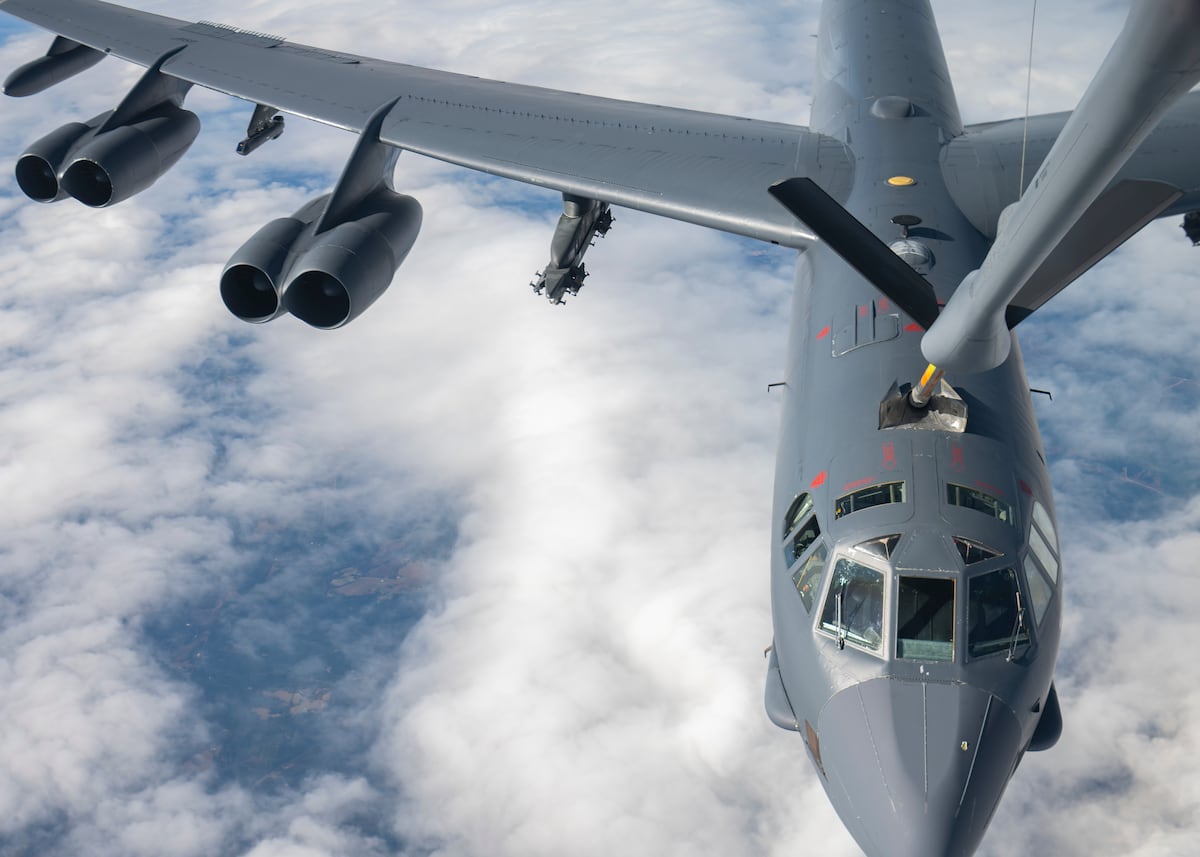New B-52 engines pass key design review, prepare for altitude tests

The new engines that will be part of a massive upgrade of the B-52H Stratofortress bomber have passed their critical design review, and are set to begin final development, production and more intensive testing.
The F130 engines, which will be a key part of the bombers’ transformation into the B-52J, are now on track to start altitude testing at the Air Force’s Arnold Engineering Development Complex in Tennessee in February, Rolls-Royce announced Friday. During altitude testing, the engines will be evaluated at various simulated altitudes to see how well they perform in different flight conditions.
The upgrades slated for the B-52 will also include new and improved radar, avionics, displays, wheels, brakes and other modernizations.
The Stratofortress modernization is central to the Air Force’s plans to reshape its bomber fleet to prepare for a potential war against a major adversary. As the Air Force brings on its newest bomber, the stealth B-21 Raider, it plans to retire its aging and worn-out B-1 Lancer and B-2 Spirit fleets. Sometime in the 2030s, the Air Force expects to have a two-bomber fleet consisting of at least 100 B-21s and 76 upgraded B-52Js.
The B-52Hs, which joined the Air Force’s fleet in the early 1960s, are still flying with their original TF33 engines. Those 60-year-old TF33s are now at the end of their working lives and finding “new and creative ways of breaking,” as one Air Force Global Strike Command officer said earlier this year. Maintainers are hard-pressed to keep B-52s flying, as spare parts grow scarcer and airmen regularly are increasingly forced to cannibalize other engines to keep operational planes working.
The B-52′s planned upgrades are expected to keep them operating into the 2050s and perhaps even to 2060, which would make them nearly a century old.
“We’re extremely proud to have delivered the F130 [critical design review] milestone on time for the B-52J,” said Candice Bineyard, Rolls-Royce’s director of early life cycle and naval programs for defense. “Throughout the detailed design phase, our teams have executed a rigorous process in close collaboration with our partners. We’re excited to start the production work to deliver this incredible and highly reliable engine for the B-52J.”
Sea-level testing of the F130, which was conducted at Rolls-Royce’s Indianapolis facility, has recently finished, the company said. That testing regimen ran the engine’s first software release.
Another series of tests to make sure the engines will work in their twin pod configuration, which were held at NASA’s Stennis Space Center, took place this summer. Those rapid twin pod tests also helped show Rolls-Royce’s predictions on how the engines would operate were accurate, the company said, which reduced the amount of risk the program faces.
The Gulfstream G650 business jet now flies with a version of the F130 engine. However, the twin pod, underwing configuration planned for the B-52 will be a different mount for those engines, so the Air Force needed to verify they would operate as planned that way.
Stephen Losey is the air warfare reporter for Defense News. He previously covered leadership and personnel issues at Air Force Times, and the Pentagon, special operations and air warfare at Military.com. He has traveled to the Middle East to cover U.S. Air Force operations.
Read the full article here







